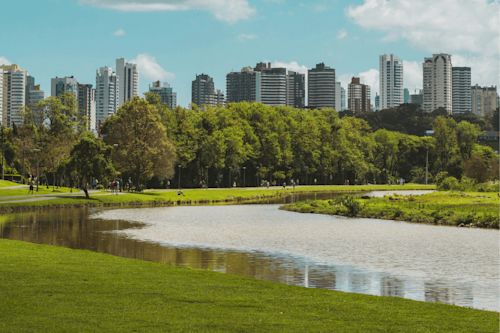From the Industrial Revolution to Green: 5 Trends in Modern Environmental Architecture
The industrial revolution brought us coal-powered factories and dense urban life. It also brought air pollution, such as soot and chemicals, causing people to suffer from dirt, dampness, and poor indoor air quality. Since then, the construction industry has been a major contributor to environmental pollution and resource depletion.
However, in recent years there has been a strong shift towards ecological building practices and sustainable architecture. Architects and builders are changing their approach, prioritizing sustainable development and minimizing the footprint of their work.
With technological progress and growing ecological awareness, we can expect even more innovative and sustainable projects. They will shape a future in which buildings are not only functional spaces, but also a responsible part of our environment.
Here are five exciting trends shaping modern environmental architecture.
1. Biomimicry – where nature is the model to follow

Mother Nature is the greatest innovator, perfecting her solutions for efficiency and resilience for millions of years. Biomimicry, a fascinating field, learns from these ingenious designs and translates them into remarkable achievements in sustainable architecture.
This approach can help architects create buildings that stay naturally cool. They can find inspiration in the intricate ventilation systems of termite mounds. Or self-cleaning facades that mimic the hydrophobic surface of the lotus flower, reducing maintenance and harmful chemicals.
Even the incredible strength and flexibility of spider silk holds potential for new, sustainable building materials. Biomimicry pushes the boundaries of architecture, drawing inspiration from nature to create more ecological and efficient structures for the future.
2. Modular construction – ensuring efficiency

Traditional construction can be uneconomical and resource-intensive, generating mountains of waste and consuming significant amounts of energy. Modular construction comes to the rescue. A more ecological alternative, where buildings are prefabricated, assembled from sections built in controlled environments off-site.
Modular construction provides a range of benefits for environmental architecture: Reduced waste thanks to precise production, increased efficiency due to shorter construction times and lower emissions, and remarkable flexibility in expanding, reconfiguring, or even relocating modular buildings to adapt to changing needs.
It's like building with Lego blocks, but on a larger, more ecological scale.
3. Living architecture – a deep breath with nature

Imagine buildings that are more than just concrete shells, but thriving ecosystems that breathe with nature. Living architecture embraces this vision, weaving elements such as green roofs, vertical gardens, and natural ventilation systems into the very structure of the building.
Such integration brings many benefits: Plants act as natural air filters, purifying the air and creating healthier spaces. Green roofs and smart ventilation systems become partners in regulating temperature, reducing reliance on energy-intensive HVAC systems.
Most importantly, living architecture connects us with nature. Studies show that its presence reduces stress, sharpens minds, and promotes the well-being of those who live in it. It is a way to blur the boundaries between inside and outside, building structures that breathe and grow with us.
4. Material revolution – bamboo instead of brick

The construction industry is witnessing a material revolution, where sustainability and efficiency go hand in hand. Renewable resources such as bamboo, straw, and even mycelium are being used in building blocks, offering a more ecological alternative to the concrete and steel giants of the past.
These bio-based materials are not only environmentally friendly, but also offer unique aesthetics and properties. But the green wave doesn't stop there. We are also seeing innovations in recycled materials, where plastic and glass waste find new life as building elements, reducing environmental impact and creating buildings that are both resource-efficient and stunningly unique.
Add to this smart materials – those that change color, regulate temperature, or even generate energy from sunlight. These futuristic materials push the boundaries of what buildings can do, paving the way for structures that are not just passive shelters, but active participants in a sustainable future.
5. Sustainability driven by technology – the best green “hack”

Technology is not just a guest at the green building party, but the host that turns sustainability into reality.
Tools such as BIM software allow architects and engineers to build virtual models, adjusting them for optimal performance and detecting flaws before the first brick is laid. The days of fossil fuel guzzlers are long gone – buildings now sprout solar panels like sunflowers, catching sunlight and breathing life into cleaner energy grids.
On top of that, there are smart building systems, tireless assistants whispering to lights, heaters, and vents, ensuring maximum comfort with minimal environmental impact. It's like having a building on autopilot, constantly adjusting to the ideal balance between ecological living and modern convenience.
With technology as our guide, buildings are evolving from static structures to dynamic partners in a sustainable future.



